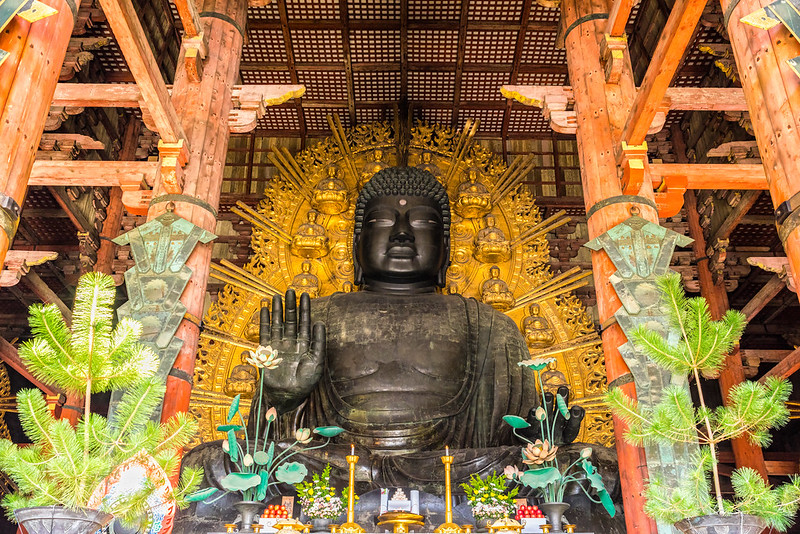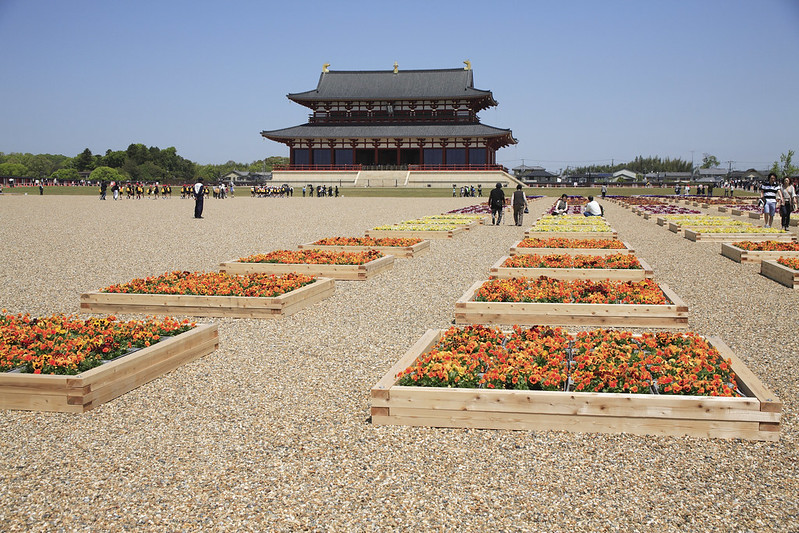
Reliving the Past in Nara
Heijō-kyō (平城京), also known as Nara no miyako, was the capital city of Japan during the Nara period (710–794 CE). During this time, Heijō-kyō was the country’s political and cultural center and was modeled after the most prosperous capital city of China during the Tang Dynasty, Chang’an. Heijō-kyō, or Nara, was 2,500 hectares and measured 5.9 kilometers east to west, and 4.8 kilometers north to south. The former capital was considered to be a vast and very advanced city in Asia.
Nara’s main street, Suzaku Avenue, proudly stretched all the way from Heijo Palace in the north to the Suzakumon Gate in the southernmost entrance of the capital.
Tōdai-ji, a Buddist temple complex, Nara, Japan.
Roads were constructed in a grid pattern leading left and right, a revolutionary achievement at the time.
The imperial palace in Heijō-kyō is considered one of Japan’s Historic Monuments of Ancient Nara and listed as a UNESCO World Heritage site. Heijo-kyu History Museum, the Heijo Palace Site Museum, and the Excavation Site Exhibition Hall house all the artifacts of an era long gone and have influenced the rich culture and history of the Japanese people.
The Bronze Buddha at Todai-ji temple’s Daibutsuden.
Heijō-kyō was made the capital city of Japan in 708 CE by Empress Gemmei. The city was a bustling metropolis full of merchants from neighboring countries, especially China, India, and Korea. These merchants introduced their unique cultures along the Silk Road. This allowed Heijō-kyō to become a prosperous capital that became Japan’s first international and political hub during that era. Its population grew to an all time peak of 100,000.
Today, Nara is no longer the capital city, but it still is the site of several historical temples and the home of the Nara Daibutsu, a 15-meter tall bronze Buddha. More surprisingly, as of late, Nara has become popular for its deer population.
Nara Park, a 500-hectare area is home to over a thousand deer. Most of the time, the deer are able to stray out of the park and walk along the streets of Nara. The residents don’t seem to mind sharing their city with the deer. For many of the visitors, the deer are an added bonus to all the amazing sights of the historical city.


